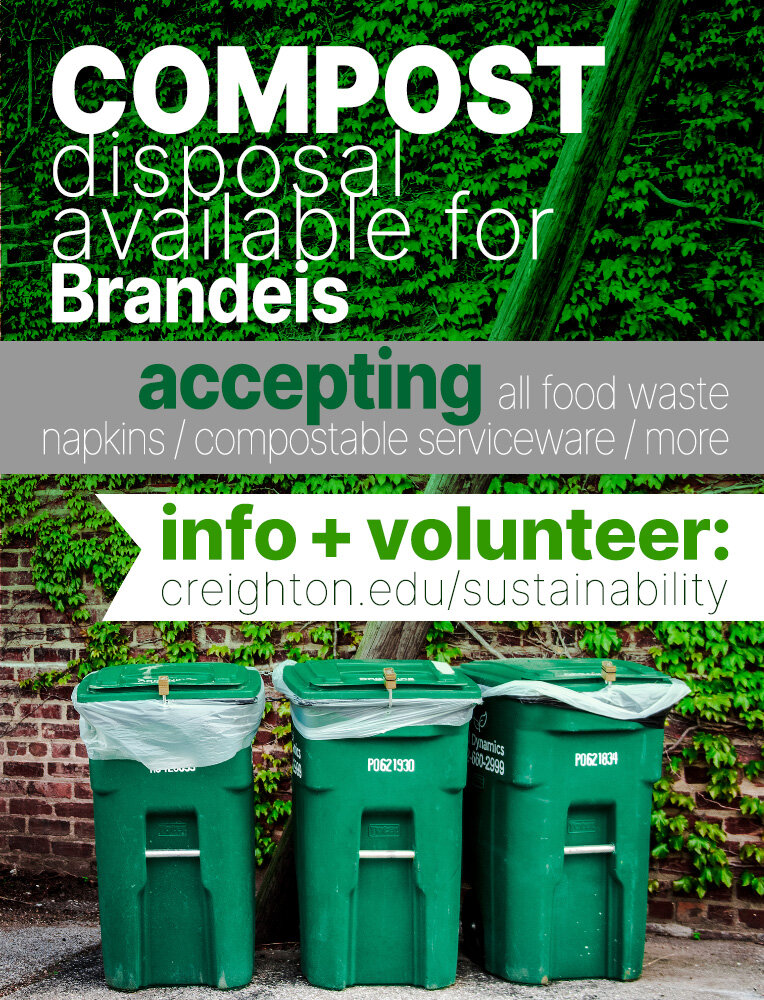How-to Set up a College Composting Program
Through our partnership and the help of 77 students, nearly 260 pounds of compostable material a day is being collected from Omaha, Nebraska’s Creighton University.
But instead of that material going to the landfill to put off noxious methane gas and create toxic sludge, we’re bringing it to our Soil Dynamics Composting Farm in Ashland to be transformed into nutrient dense soil.
Creighton’s transforming 8,000 pounds of compostable “waste” into soil every month
What’s better: To demonstrate the circular economy, support climate justice and combat food deserts during a pandemic, Creighton arranged with us to have the soil they helped create go back to community food gardens in North Omaha.
Every month, Creighton’s donating enough soil to nourish 1 community garden for an entire year
But the best part: While this pilot project is focused on the freshman and sophomore food hall — if it moves the next phase, Creighton plans to extend this effort to its entire 7,500+ student campus … Think about that impact!
Our local paper, with 400,000 readers a week, loved the story so much they put it on the front page. Read it here.
How Your College Can Do The Same
If you’re apart of a campus or organization that wants to start composting, along with our full interview with Creighton’s Sustainability Director Nick McCreary at the top of this post, here’s some best-practice highlights culminating from Hillside’s work with 25+ schools, Creighton’s program and the Post Landfill Action Network …
Partnerships: Find out if you have an industrial composting facility nearby. For the Greater Omaha area, that’s us. If not, determine if your campus can compost on-site.
Green Team: You want student and staff collaboration with a clear succession plan. A group like this can help convince decision makers commit to a compost program, but also show there’s a network to bring it to life and a safety net to ensure it continues. Creighton already had a head start with its Sustainable Creighton department, but outreach to a number of student organizations were still necessary.
Single-Use Material Audit: Collaborate with the purchasing department to see what single-use materials you can convert to reusables, compostables, or recyclables. Audit what types of materials go into which bins. If you want to switch to compostable service-ware, we recommend working with Larsen Supply Co.
Infrastructure Change: The correct colored bins, prominent signs, and a “where one bin is, all are present” method reduce contamination. Go with the national color standard of green for composting, blue for recycling, and black for landfill. Ensuring campus-wide consistency is the end goal. See our Quick Start Guide for guidance.
Marketing: Figure out how to let students know. Creighton created a webpage, video, hand-flyer (shown above) and student organizations to spread the message and recruit volunteers.
Volunteers: Cut down on contamination with volunteers stationed at bins to assist with source separation. Provide a clear plan to coordinate volunteers, staff and your compost hauler such as Creighton’s example.
Measure: Weigh what you collect at least 1 or 2 times to give a general estimate of how much you’ll collect over time, then use this info to bolster support.
Go Deeper
The Post Landfill Action Network (PLAN) does a lot of great work in this area. Below is a video presentation they did with the US Composting Council’s Young Professionals Group, and you can request access to their well researched manual. Also some resources on the US Composting Council’s site.






